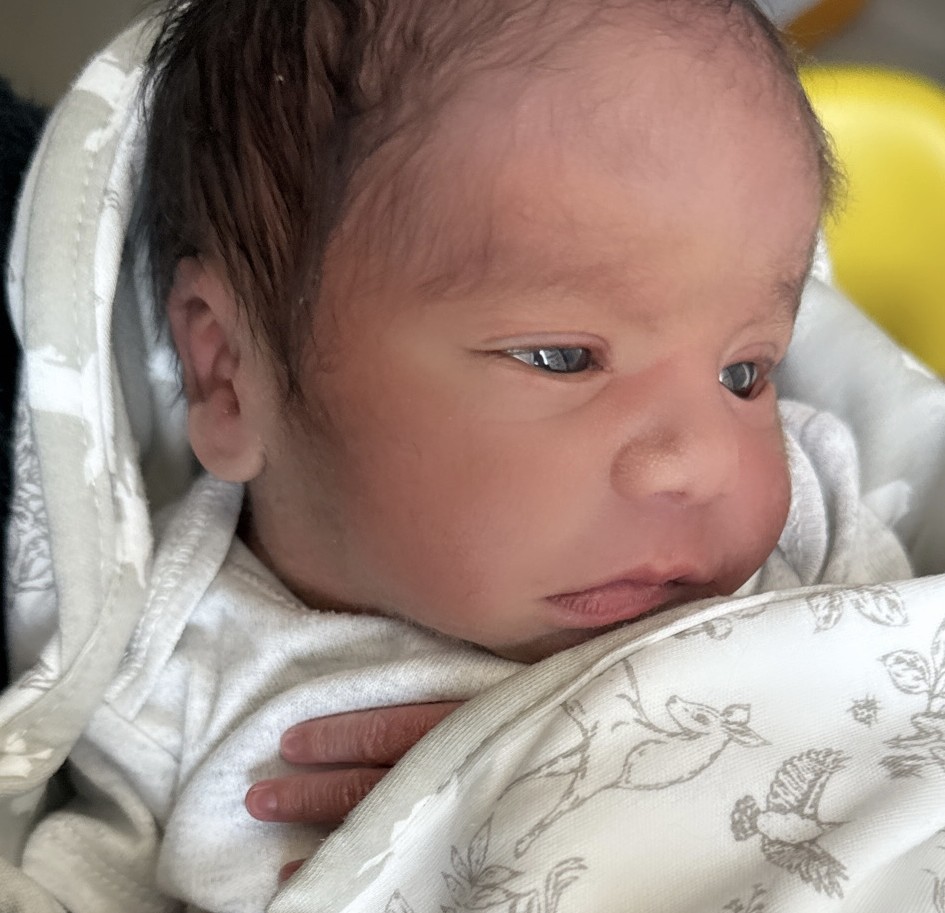
Many people know little or nothing about liver disease in babies, but we often hear from parents who followed their instinct that something was wrong, despite receiving reassurance, and we’re very grateful to Summiya for her detailed account of her experience with her son Yasin.
Yasin was born on 19th January 2024 at the Royal London Hospital in London. There were no problems with my pregnancy or his birth. I had a natural delivery, and the pregnancy was very smooth, just like with my previous two children, who are now eight and five years old and are perfectly healthy.
So, I had no reason to worry about any health issues. After birth, Yasin did develop neonatal jaundice, but he was treated with phototherapy, and we were discharged within a few days. He left the hospital healthy, and his routine heel prick blood tests also came back completely normal.
It was around week three that I noticed something was not right with Yasin. He started to look much more yellow, and because he is of South Asian descent, his skin tone took on a yellow- green tinge that was very different from my other two children and from us. His eyes were also very visibly yellow.
Yasin was born slightly preterm at 36 weeks and 3 days, and he was a little smaller at birth. For the first few weeks after we came home, a midwife would visit regularly to check that he was gaining weight, and once he did, they discharged him from their care. I remember asking one of the midwives during a visit why his eyes were so yellow. She looked and reassured me by saying, “Oh, don’t worry, that will go away.” I accepted that at the time, but deep down I still had a feeling that something wasn’t right.
There were other symptoms as well. Yasin was constantly hungry — no matter how often I fed him, whether breast or formula, he always seemed hungry again within an hour. He also had frequent bowel movements, producing dirty nappies almost every time he fed, which didn’t make sense to me.
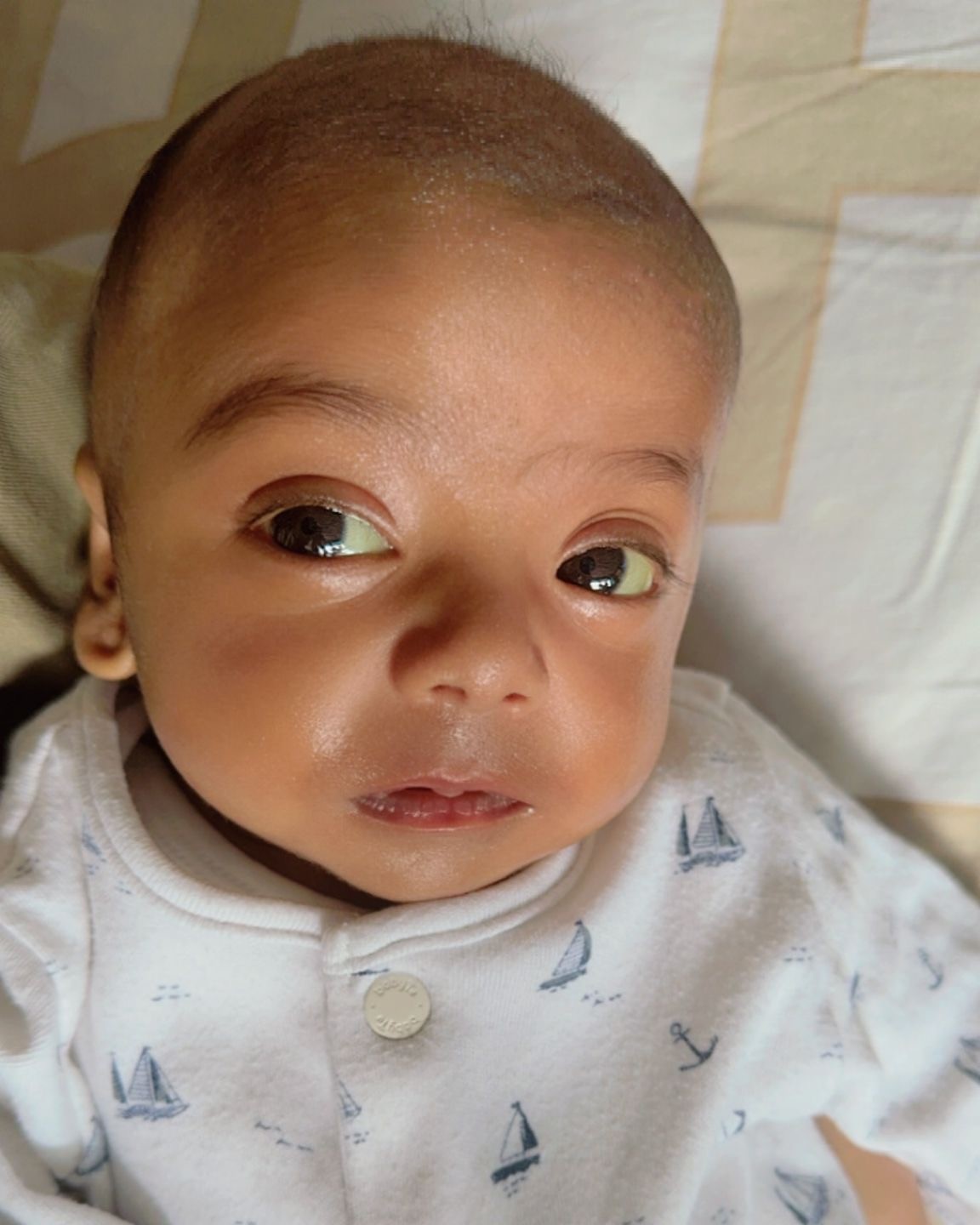
It was only when Yasin was called in for his routine eight-week mother and baby check with the GP that things really started to move forward. At that appointment, the GP examined him thoroughly from head to toe. Both she and I noticed that his skin was looking much more yellow than on some other days. She asked me how long he had been this yellow, and I told her that he had been that way for as long as I could remember. She then asked me about his feeding and sleep. His sleep was very difficult — he woke almost hourly to feed, and at night I wasn’t sleeping at all – I was completely exhausted.
The GP decided it was best to send Yasin to the paediatric ward at the Royal London Hospital for blood tests. That was the first time anyone had referred him for blood work. At the Royal London, bloods were taken and the doctors initially said they wanted to rule out something called biliary atresia. He also had an ultrasound to check his liver, which they said looked completely normal at the time. I was told that they didn’t think it was serious. They did note his stools looked pale, but said they still needed to send his results to King’s College Hospital for review, given his high bilirubin levels and symptoms. After a few days, they discharged us, reassuring me that it didn’t seem like his liver was badly affected and that he wouldn’t need emergency surgery. At the time I didn’t really understand what was being explained, but I felt relieved to hear that he might not have a liver condition.
However, just a few days later, I received a call from a registrar at King’s College Hospital, asking me to bring Yasin in for at least a two-day admission for further testing. I was very defensive at first — I told him I had two other children at home and couldn’t just suddenly go to another hospital I had never even heard of. But he urged me to make childcare arrangements and come in.
At King’s, we stayed for several days. Yasin underwent many investigations, including multiple blood tests, another ultrasound, stool samples, and eventually a liver biopsy, which they explained was the gold-standard test for diagnosing biliary atresia. The biopsy showed changes suggesting he might have the condition, but the only way to know for sure was to proceed with a Kasai operation.
I was extremely stressed and frightened to learn that my tiny baby would need a major surgery lasting around seven hours. His Kasai procedure was performed on April 2nd 2024, when he was 10 weeks old. By then, I had already read about Kasai surgery and asked the doctors whether it was too late, as the success rates are often better if it is done earlier. They explained that there was no way to predict the outcome — a five-week-old might not have a successful result, while a ten-week-old might. There was no certainty, only the need to try.
Before Yasin’s diagnosis, I had no idea that a baby could be born with liver disease. The only time I had heard of liver failure was in adults who had damaged their liver through alcohol, and I never imagined a baby could have this condition.
After the Kasai surgery, Yasin still had jaundice, but it was much milder than before. The surgeons were pleased initially because his stools became pigmented, which indicated that bilirubin was draining properly. For a few weeks, he seemed to make progress. However, about four to six weeks later, I noticed that he started to look much more yellow again. His stools became consistently pale and clay-like, and he appeared even sicker than before the Kasai surgery.
I contacted the liver CNS (Clinical Nurse Specialist) team at King’s College Hospital, who arranged for emergency blood tests at our local hospital. When the CNS nurse called me the following day, I immediately knew something was wrong, as they usually contact me by email. Yasin looked very thin, malnourished, and had a distended stomach. The nurse informed me that his liver function tests had worsened, and he needed to come in urgently for a liver review with the consultant at King’s College Hospital. I asked her if my son’s liver was failing. But she couldn’t give me an answer until we came in.
At King’s, Yasin underwent an ultrasound and further blood tests. The ultrasound showed reverse blood flow and portal hypertension, confirming that he urgently needed assessment for a liver transplant. I broke down in front of the doctor, as although we had always known that Yasin might need a transplant at some point, we did not expect the Kasai surgery to fail so quickly, leaving him extremely unwell.
The medical team informed us that he would need a transplant. However, he had to wait until the end of August 2024 for a full transplant assessment by the team, including surgeons, Professor Heaton (Head of Transplant), Professor Baker (lead consultant), and the transplant coordinator. Within minutes of meeting Professor Heaton, it was made clear that Yasin needed a liver urgently, ideally within the next three months. Being blood group B, which is rare, gave him priority on the waiting list, although there were still risks due to the shortage of organ donors. We were told that he was the only B group blood on the list at the time, but no organs had become available.
Over the following months, Yasin’s condition worsened. In November 2024, he developed a portal vein thrombosis and required hospital admission at King’s for insertion of an insuflon and twice- daily dalteparin injections. I was trained to manage the injections at home, but he had multiple bleeding incidents, infections, and hospital admissions, including a serious episode of cholangitis that required two weeks of IV antibiotics. During this time, he was temporarily suspended from the transplant list due to his critical condition and weakened immune system but was re-listed once he had stabilised.
Caring for Yasin became a full-time job. Balancing the care of my other two children alongside Yasin’s intensive needs was extremely challenging. My husband, my parents, family and my in-laws provided essential support. I had been a primary school teacher for 13 years, but I resigned after Yasin’s diagnosis and transplant listing, as it became impossible to manage work alongside his care.
Early in October 2024, realising the urgency of the situation, I had put myself forward to be tested as a potential living donor. Although my blood group is different from Yasin’s, I am an O group blood group and could donate to anyone, which put me in a strong position. And by January 2025, I was confirmed as a suitable donor. At that time, I remember researching on social media to find mothers like myself who had been living donors for their children and learning about what life was like after the procedure. I ended up speaking to a mother from America who had successfully donated her liver to her son. Hearing her experience helped me prepare mentally and emotionally.
I also reached out to other families who had been through similar experiences. Hearing their stories helped me feel less alone and gave me hope during a very challenging time.
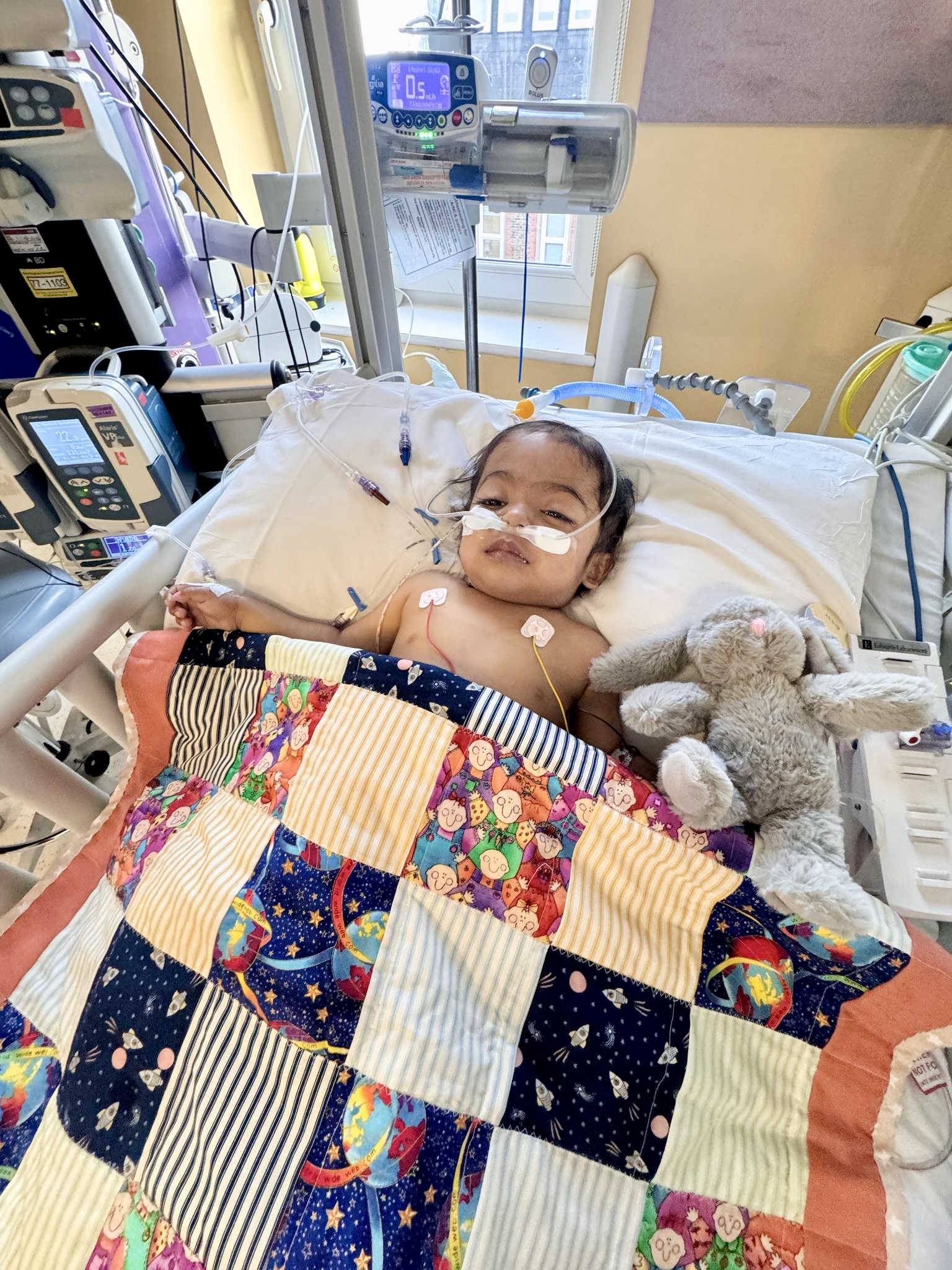
On April 16th both our surgeries took place. Yasin’s operation lasted eight hours, and mine lasted six hours and I feel very lucky that they were both a success. The surgical team that operated on both myself and Yasin were absolutely fantastic. They are superheroes. We were in the best hands possible, and we will forever be grateful for their skills, professionalism, and care.
Yasin has had a few bumps in the road after his transplant, but overall he is doing amazingly well. He is thriving, looks healthy, has gained weight, and his bilirubin levels have returned to normal. His blood flow is functioning well, and most of his liver function tests are very good. He is bursting with energy. Before transplant, he wasn’t even able to sit confidently. After transplant, in the space of weeks, he started sitting, crawling and walking shortly after. He looks like any other healthy toddler now. I often get comments from people about his bubbly and confident personality and especially on how healthy he looks. It’s very heartwarming to see him thriving because of my liver. The surgeons described it as fitting the missing piece of a puzzle inside him.
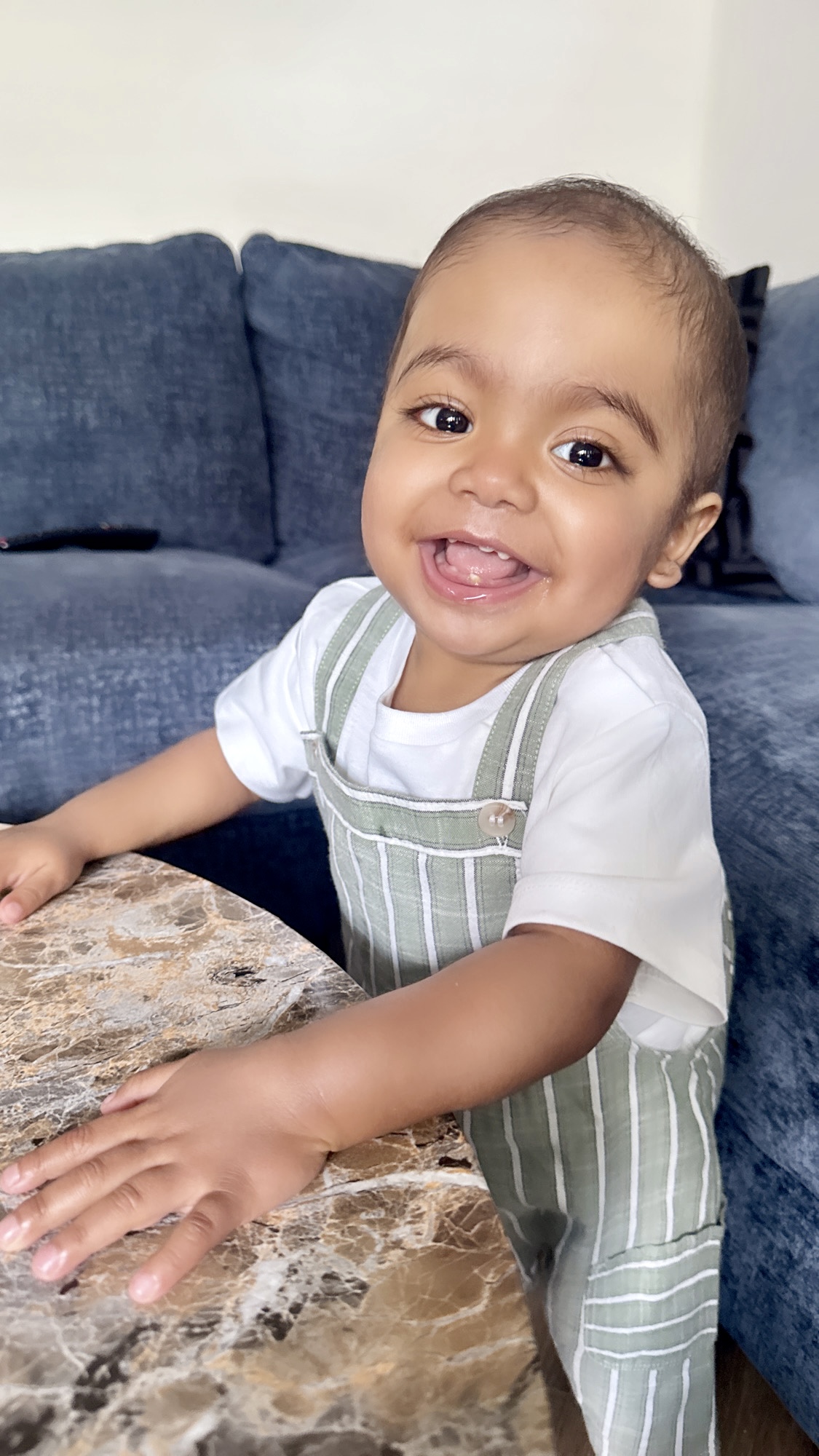
Of course, life after a transplant is a long journey, and he takes lifelong anti-rejection medication. The medical team has reassured us that eventually the dosage will be reduced, making things more manageable. Because his immune system is compromised, we are extremely mindful of Yasin’s health. He is far more sensitive than other children, so we have had to educate family and loved ones that if anyone is unwell, they cannot go near him. We also have to carefully consider any plans or outings we make, especially during the first year after his transplant, to ensure he is not exposed to infections or other health risks.
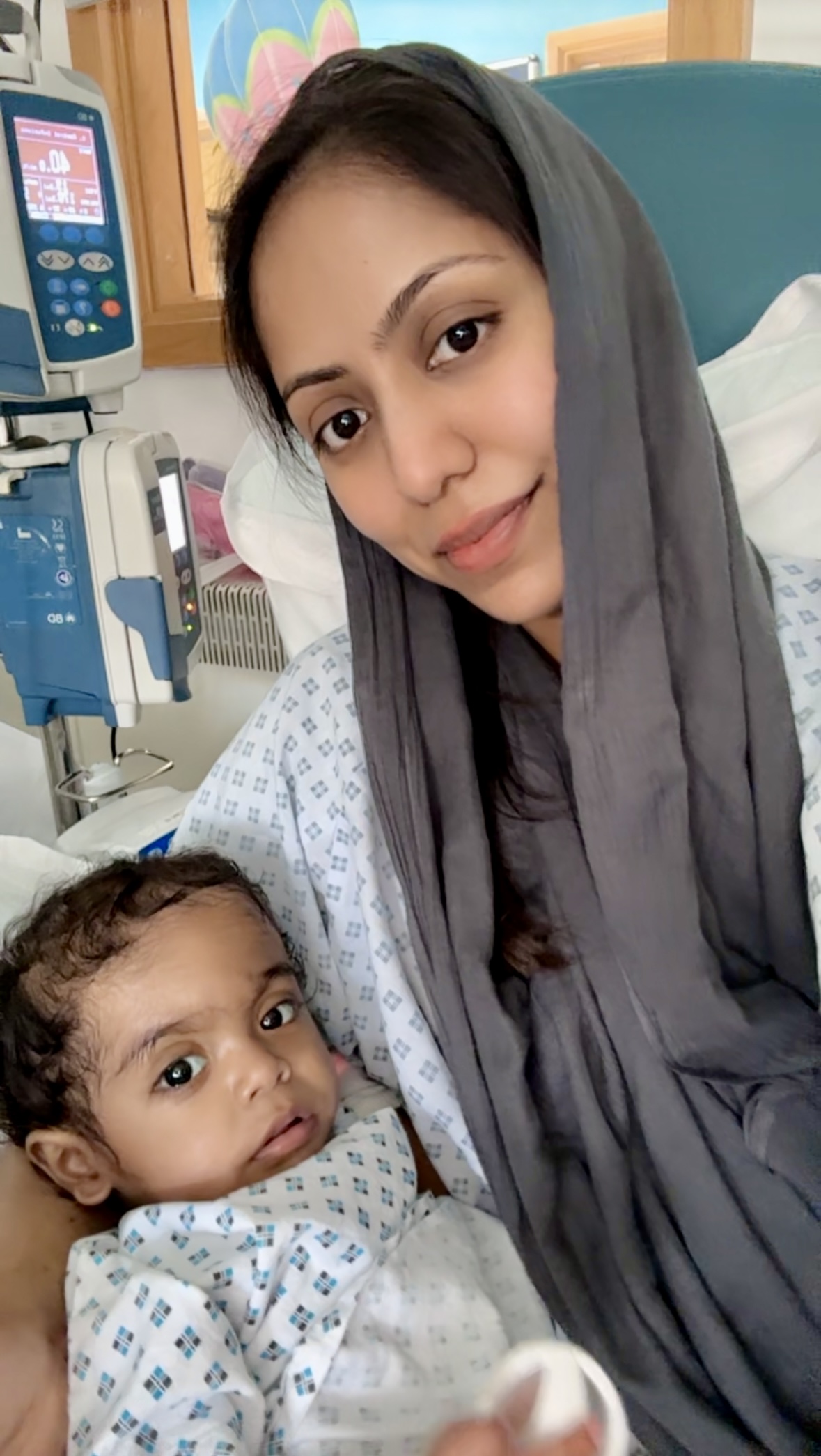
My own recovery has been extremely challenging. Being a living donor to my son was by far the hardest thing I have ever done. Even though I have given birth to three children, this was a completely different level of difficulty. One of the hardest things was being separated from Yasin for the very first time. We were split between two different ICUs in two different wards while my husband cared for both of us. As his mother and primary carer, I had never been away from Yasin before, and that separation was incredibly tough. The recovery involved managing intense pain from a large vertical incision, limited mobility, and an inability to lift anything heavy, including my son. So, yes it was physically and emotionally intense, but it has given both Yasin and me a second chance at life and I feel privileged to have been able to do this for him.
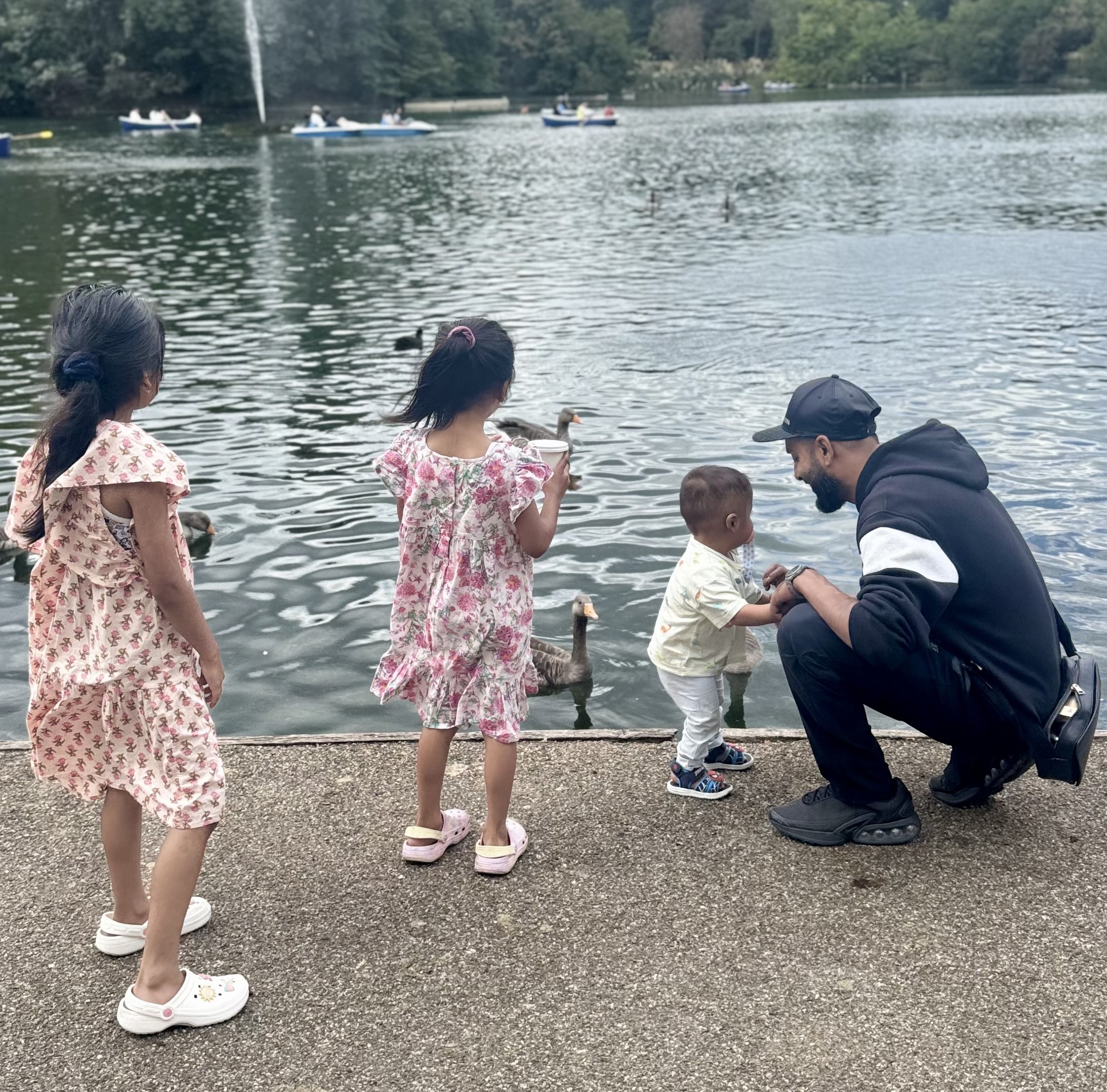
Our family life has been challenging, particularly for my two older children. They missed me greatly during my recovery, especially as both Yasin and I were in hospital. My husband took extended leave from work to care for us, and my parents, family and in-laws provided essential support with our other children. There were difficult moments, but with video calls and hospital visits, we managed to stay connected. Now, our children are happy, and our family is slowly getting back to normal.
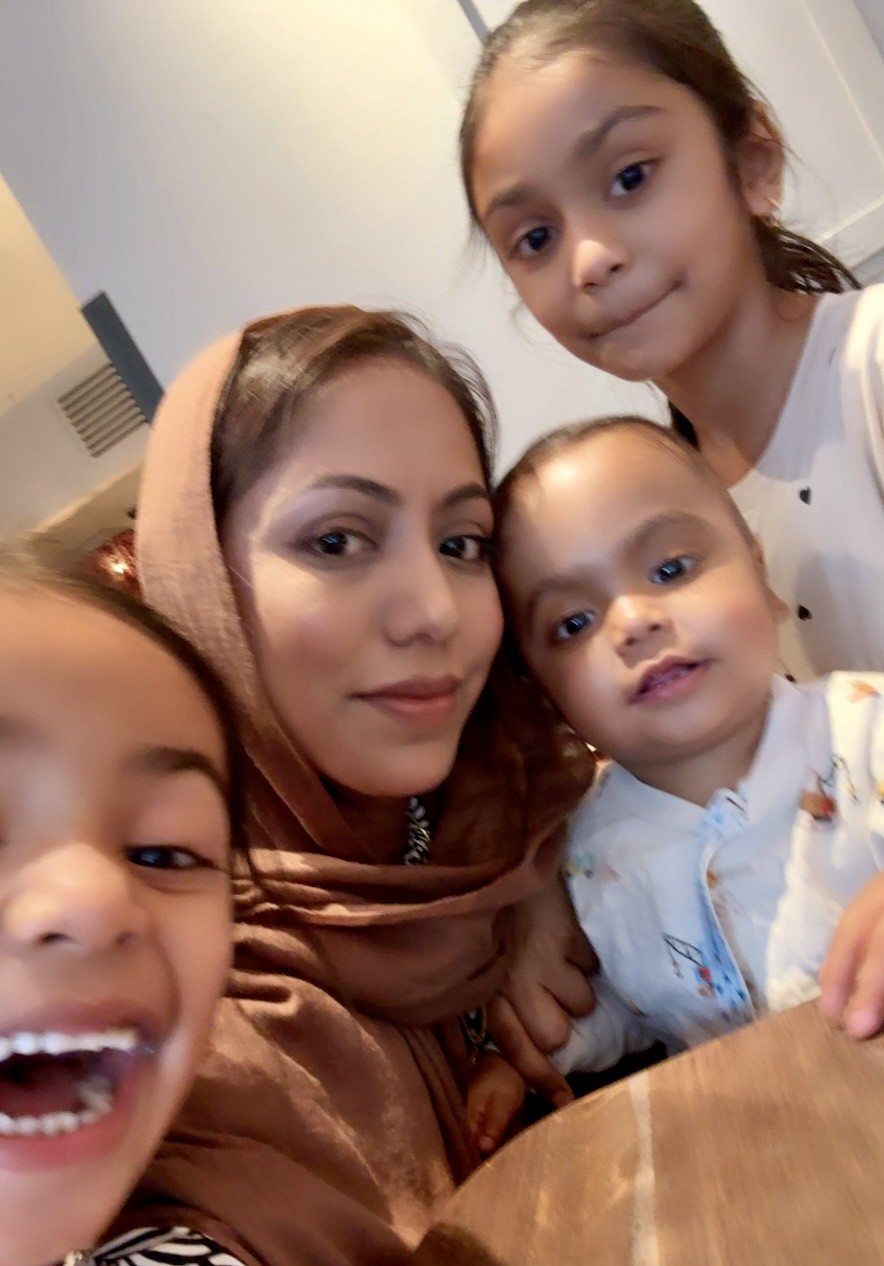
I know a lot of families will be heartbroken to hear that their child may need a liver transplant or that a Kasai procedure may fail, as it did for us. But this does not mean it is the end of their child’s life. We welcomed the idea of a transplant because we knew it would change his life for the better. While a transplant replaces the damaged liver, it is another journey and requires care, but it gives children a new lease of life. Families should know that children can go on to live very healthy, normal lives, grow up, and even have families of their own.
Deciding to be my son’s living donor was not an overnight decision. It was a family decision. The transplant co-ordinator emphasised that it impacts the whole family — not just the donor and the child, but also the other children, the partner, and immediate family members. It is something that must be carefully considered and thought through. For us, it was the right decision, and I do not regret it. Seeing Yasin after the transplant, I would do it again. The scar I bear is a reminder of what I did to save my son’s life and something I will always be proud of.
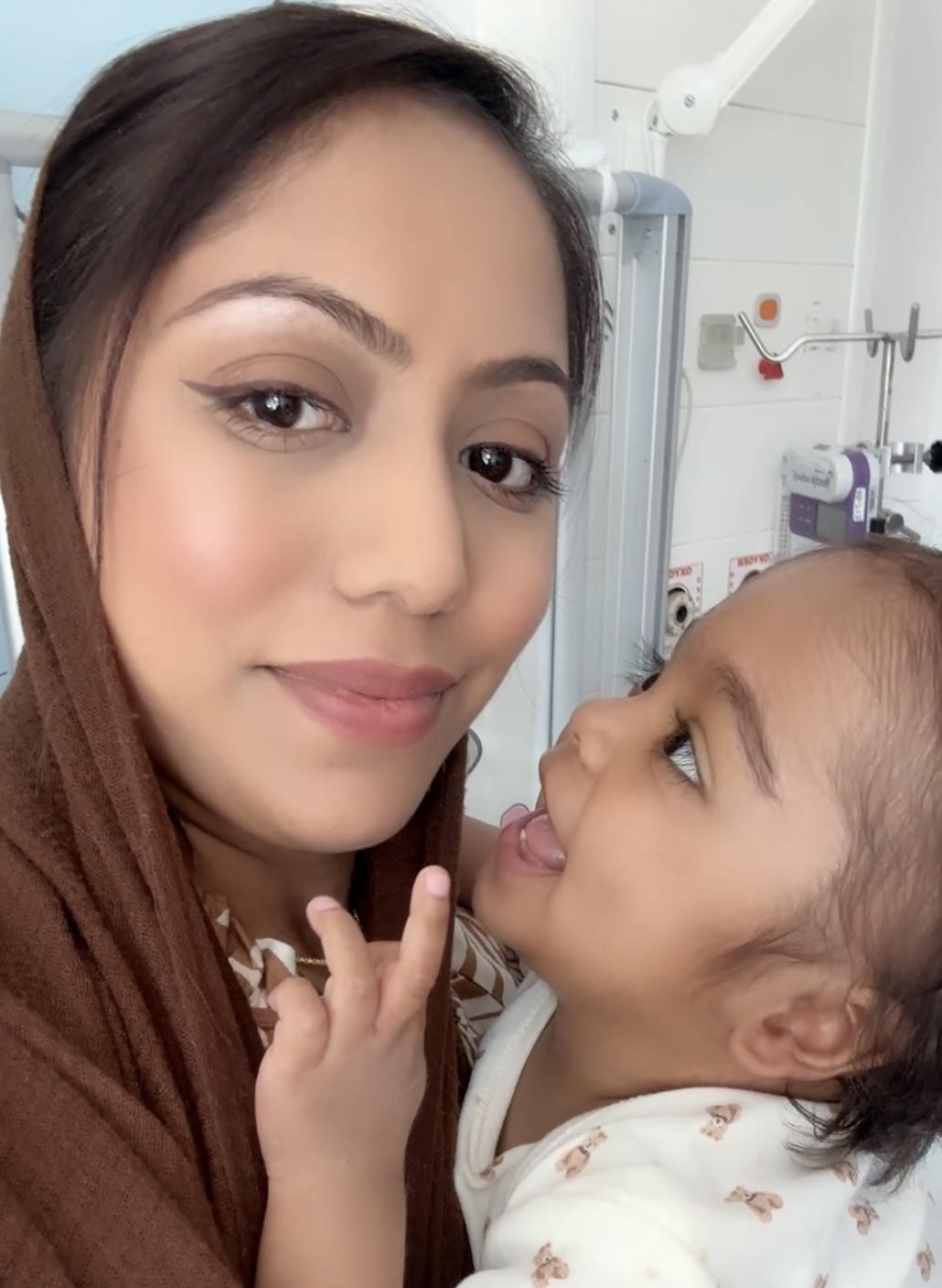
Knowing what I know now, my advice to other parents in relation to childhood liver disease is to trust your instincts. If you notice that your child’s stools are pale or chalky, or that their skin or eyes are unusually yellow, do not wait or accept reassurances that it is nothing to worry about. Seek immediate medical advice from a GP or hospital. Early recognition and intervention can make a huge difference in outcomes. I also feel strongly that there needs to be better education for healthcare professionals, especially midwives and NHS staff, about recognising early signs of liver disease in babies. Parents must advocate for their child, as early action can be life-saving.
More information on our Yellow Alert campaign to identify the signs of liver disease in newborns is here


Wow.
What a powerful and inspiring story. Both mother and son showed that love has no limits and can overcome any obstacle. Couldn’t hold back my tears after reading this. Indeed you were chosen as his mother by the Almighty. Thank you for sharing your story. Going forward this story will remain with me for a lifetime and I too have become more aware of liver disease in babies. And that a mother’s gut instinct is never wrong and should be listened to. Even the name Yasin you have given him which is highly revered in Islam and referred to as the heart of the Quran and recited for protection and blessings. You as his mother became that blessing for him by giving a part of you. Just like his name, I pray you both will always live a life of ease, happiness and strength together post transplant. Thank you again for sharing your story with us all and for advocating for Yasin when he needed it the most.
Thank you for such a beautiful message. 🤍
A beautiful story of love, dedication, commitment, and faith — all entwined to overcome the rocky start to Yasin’s life. May Allah (SWT) protect him, bless him with strength, and grant him a long, prosperous, and thriving life. Your family has faced immense challenges and risen to them with remarkable courage and unwavering faith. Well done super mum